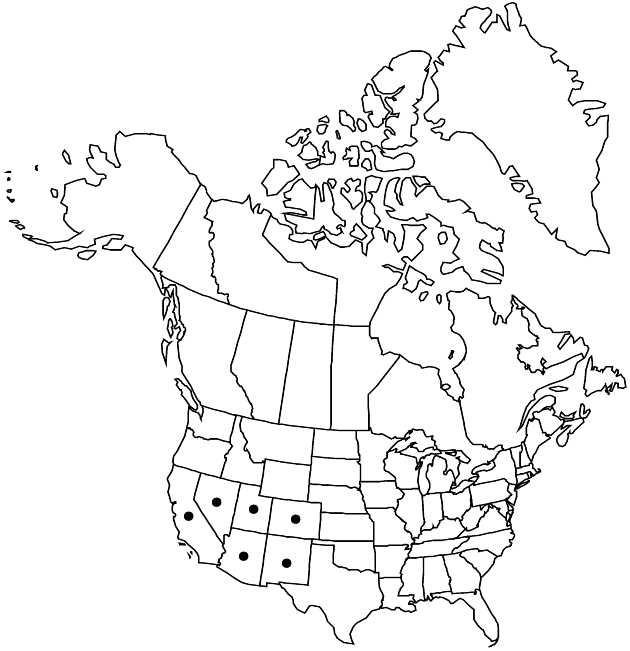Chrysothamnus depressus
Proc. Acad. Nat. Sci. Philadelphia 4: 19. 1848.
Shrubs, 10–50 cm; woody, highly branched caudices, proximal branches decumbent, bark tan to gray, flaky with age. Stems green, becoming whitish tan, ± ridged from leaf bases, densely puberulent. Leaves erect or closely ascending; sessile; blades with evident midnerves, linear to oblanceolate or narrowly oblong, 7–30 × 1.5–7 mm, flat to keeled, apices acute (often apiculate), faces glabrous or puberulent, sometimes sparsely stipitate-glandular. Heads in densely cymiform arrays, not overtopped by distal leaves. Involucres obconic, 9–15 × 3–5 mm. Phyllaries 20–25 in 4–6 series, in 5 strong vertical ranks, tan, often with green and/or purplish markings, midnerves evident throughout and ± expanded apically, lanceolate to elliptic, 3–8 × 0.5–1.5 mm, unequal, outer often herbaceous, inner scarious, strongly keeled, apices acute to acuminate, flat, faces puberulent. Disc florets 5–6; corollas 7–11 mm, lobes 1–2.1 mm; style branches 2.4–3.3 mm, appendages 1.5–2 mm. Cypselae tan, subcylindric (tapering proximally), ± flattened, 5–6.5 mm, faces glabrous, sparsely glandular distally; pappi whitish tan, 5.5–7.5 mm. 2n = 18.
Phenology: Flowering late summer–fall.
Habitat: Dry canyons and rocky crevices
Elevation: 1000–2700 m
Distribution

Ariz., Calif., Colo., Nev., N.Mex., Utah.
Discussion
Selected References
None.